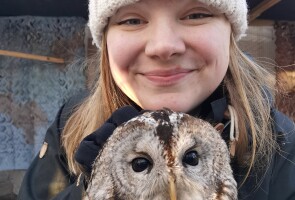Research at the Department of Biology
We have a strong, versatile and internationally recognized research agenda in ecology, animal physiology, genetics and evolutionary biology. Many of our research projects integrate over the levels of biological organization and involve multi-disciplinary collaborations.
Our strength is strong and ambitious basic research that can provide novel and unforeseen perspectives and solutions into societal challenges e.g. in nature conservation or in medicine.
Our multifaceted applied research tackles global change and uses integrative methodology, for example molecular genetics when exploring ecosystem function. A good example is resolving changes in physiological functions of individuals – using cell- and molecular biology methods – as a response to environmental change in the Baltic Sea ecosystem.
Our strong research fields include
- human biological and cultural evolution
- tropical ecology
- biotic interactions, particularly plant-herbivore, and predator-prey, in marine and terrestrial communities
- aquatic animal physiology and ecotoxicology
- microbial genetics and evolution
- animal behavior and population ecology
Our research staff includes 9 associate/full professors and about 80 researchers. The Department gains plenty of competitive external research funding and produces over 200 international, peer-reviewed scientific publications yearly.



